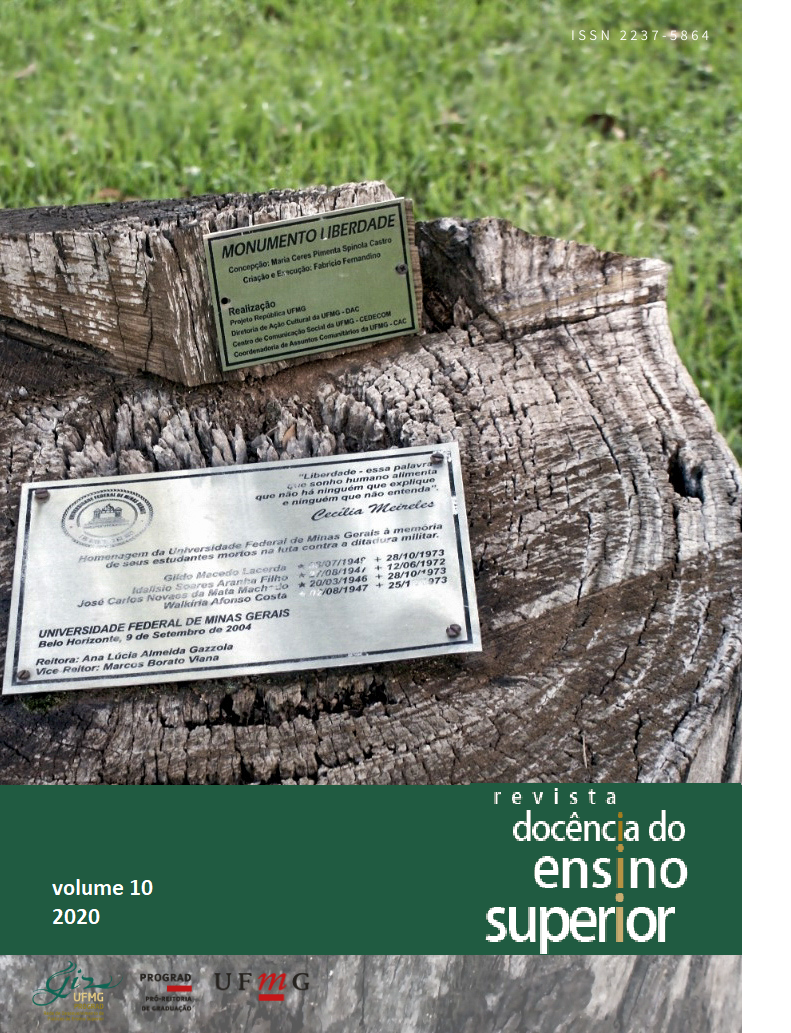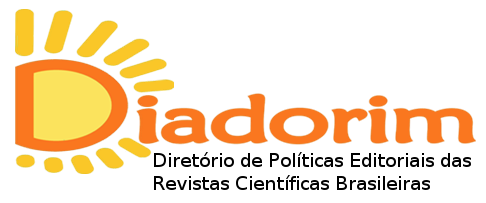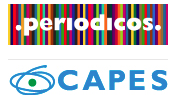“Una clase diferente”
un caso de introducción de actividades interactivas en la enseñanza de la Ciencia Politica
DOI:
https://doi.org/10.35699/2237-5864.2020.24042Palabras clave:
Aprendizaje activo, Actividades interactivas de clase, Formación en Ciencia Política, Educación superior en PortugalResumen
El artículo tiene como objetivo revelar el impacto de la introducción de actividades interactivas en clase sobre la satisfacción del estudiante. Se basa en el enfoque constructivista del conocimiento y en las ventajas del aprendizaje activo (active learning); se llevó a cabo un estudio empírico, que consistió en comparar los cuestionarios de satisfacción de los estudiantes de dos clases, donde las actividades no se realizaron, con otras dos, donde estas actividades sí tuvieron lugar. Los cuestionarios fueron sometidos a un análisis de contenido cualitativo y cuantitativo, revelando la apreciación que los estudiantes atribuyen a las clases interactivas. La interactividad llegó a considerarse el punto fuerte de evaluación más importante, tanto para el curso como para el profesor. Estos resultados refuerzan estudios previos que muestran las ventajas del aprendizaje activo para aumentar la satisfacción de los estudiantes. Son particularmente importantes en el área de la Ciencia Política, donde un tipo de aprendizaje que fomenta las habilidades analíticas, el pensamiento crítico, bien como las habilidades de comunicación, serán especialmente apropiadas.
Descargas
Referencias
AMES, Carole. Motivation: What teachers need to know. Teachers college record, New York, v. 91, n. 3, p. 409-421, 1990.
ARAÚJO, Adriana Maria Procópio; SLOMSKI, Vilma Geni. Active learning methods: An analysis of applications and experiences in Brazilian accounting teaching. Creative Education, v. 4, n. 12, p. 20-27, 2013. DOI: http://dx.doi.org/10.4236/ce.2013.412A2004.
ARCHER, Candace C.; MILLER, Melissa K. Prioritizing active learning: An exploration of gateway courses in political science. PS: Political Science & Politics, Cambridge, v. 44, n. 2, p. 429-434, 2011. DOI: https://doi.org/10.1017/S1049096511000291.
ARMBRUSTER, Peter; PATEL, Maya; JOHNSON, Erika; WEISS, Martha. Active learning and student-centered pedagogy improve student attitudes and performance in introductory biology. CBE—Life Sciences Education, v. 8, n. 3, p. 203-213, 2009. DOI: https://dx.doi.org/10.1187%2Fcbe.09-03-0025.
BONWELL, Charles C.; EISON, James A. Active learning: creating excitement in the classroom. ASH-ERIC Higher Education Report No. 1. Washington, D.C.: The George Washington University, School of Education and Human Development, 1991.
BRANSFORD, John D.; BROWN, Ann L.; COCKING, Rodney R. (org.). How people learn: Brain, mind, experience, and school. Washington D.C.: National Academy Press, 1999.
CAVANAGH, Michael. Students' experiences of active engagement through cooperative learning activities in lectures. Active learning in higher education, v. 12, n. 1, p. 23-33, 2011. DOI: https://doi.org/10.1177%2F1469787410387724.
DIAS, José J. C. Teixeira; JESUS, Helena Pedrosa de; SOUZA, Francislê Neri de; WATTS, Mike. Teaching for quality learning in chemistry. International Journal of Science Education, v. 27, n. 9, p. 1123-1137, 2005. DOI: https://doi.org/10.1080/09500690500102813.
FELDER, Richard; BRENT, Rebecca. Active learning: An introduction. ASQ Higher Education Brief, v. 2, n. 4, p. 122-127, 2009.
FREDERKING, Brian. Simulations and student learning. Journal of Political Science Education, v. 1, n. 3, p. 385-393, 2005. DOI: https://doi.org/10.1080/15512160500261236.
FREEMAN, Scott; EDDY, Sarah L.; MCDONOUGH, Miles; SMITH, Michelle K.; OKOROAFOR, Nnadozie; JORDT, Hannah; WENDEROTH, Mary Pat. Active learning increases student performance in science, engineering, and mathematics. Proceedings of the National Academy of Sciences, Washington, D.C., v. 111, n. 23, p. 8410-8415, 2014. DOI: https://doi.org/10.1073/pnas.1319030111.
HARTIKAINEN, Susanna; RINTALA, Heta; PYLVÄS, Laura; NOKELAINEN, Petri. The concept of active learning and the measurement of learning outcomes: A review of research in engineering higher education. Education Sciences, v. 9, n. 4, p. 1-19, 2019. DOI: https://doi.org/10.3390/educsci9040276.
HYUN, Jung; EDIGER, Ruth; LEE, Donghun. Students' Satisfaction on Their Learning Process in Active Learning and Traditional Classrooms. International Journal of Teaching and Learning in Higher Education, v. 29, n. 1, p. 108-118, 2017.
JOHNSON, David W.; JOHNSON, Roger T.; SMITH, Karl A. Cooperative learning: Increasing college faculty instructional productivity. ASHE-ENC Higher Education Report No. 4. Washington, DC: The George Washington University, School of Education and Human Development, 1991.
JOHNSON, David W.; JOHNSON, Roger T.; STANNE, Mary B. Cooperative learning methods: A meta-analysis. Methods, v. 1, p. 1-33, 2000.
JOHNSON, Matthew. Communicating Politics: Using Active Learning to Demonstrate the Value of the Discipline. British Journal of Educational Studies, v. 64, n. 3, p. 315-335, 2016. DOI: https://doi.org/10.1080/00071005.2015.1133798.
JUNGST, Steven; WIERSEMA, Janice A.; LICKLIDER, Barbara. Providing support for faculty who wish to shift to a learning-centered paradigm in their higher education classrooms. Journal of the Scholarship of Teaching and Learning, Bloomington, v. 3, n. 3, p. 69-81, 2003.
KNIGHT, Jennifer K.; WOOD, William B. Teaching more by lecturing less. CBE—Life Sciences Education, v. 4, n. 4, p. 298-310, 2005. DOI: https://dx.doi.org/10.1187%2F05-06-0082.
LUMPKIN, Angela; ACHEN, Rebecca M.; DODD, Regan K. Student perceptions of active learning. College Student Journal, v. 49, n. 1, p. 121-133, 2015.
MACHEMER, Patricia L.; CRAWFORD, Pat. Student perceptions of active learning in a large cross-disciplinary classroom. Active learning in higher education, v. 8, n. 1, p. 9-30, 2007. DOI: https://doi.org/10.1177%2F1469787407074008.
MESQUITA, Alessandra R.; SOUZA, Werlissandra M.; BOAVENTURA, Thays C.; BARROS, Izadora; ANTONIOLLI, Angelo R.; SILVA, Wellington B.; JUNIOR, Divaldo P. Lyra. The effect of active learning methodologies on the teaching of pharmaceutical care in a Brazilian pharmacy faculty. PLoS One [Internet], v. 10, n. 5, p. 1-16, 2015. DOI: https://doi.org/10.1371/journal.pone.0123141.
MILLER, Harry Lloyd. Creative Learning and Teaching. New York, NY: Charles Scribner’s Sons, 1927.
MORAIS, Maria de Fátima; AZEVEDO, Ivete; FLEITH, Denise de Souza; ALENCAR, Eunice Maria Lima Soriano de; ALMEIDA, Leandro Silva; ARAÚJO, Alexandra M. Teaching practices for creativity at university: A study in Portugal and Brazil. Paidéia, Ribeirão Preto, v. 27, n. 67, p. 56-64, 2017. DOI: http://dx.doi.org/10.1590/1982-43272767201707.
NETO, Pedro; WILLIAMS, Bill; CARVALHO, I. S. Cultivating active learning during and outside class. In: PROCEEDINGS OF 37TH ANNUAL CONFERENCE OF THE EUROPEAN SOCIETY FOR ENGINEERING (SEFI), Orléans, 2009. p. 1-4.
PHILLIPS, Denis C. The good, the bad, and the ugly: The many faces of constructivism. Educational researcher, v. 24, n. 7, p. 5-12, 1995. DOI: https://doi.org/10.3102%2F0013189X024007005.
PLESCHOVÁ, Gabriela. Promoting political science education in Europe: how can ECPR support their members in their work as political science teachers?. European Political Science, v. 13, n. 2, p. 138-145, 2014. DOI: https://doi.org/10.1057/eps.2012.30.
PRESZLER, Ralph W. et al. Assessment of the effects of student response systems on student learning and attitudes over a broad range of biology courses. CBE—Life Sciences Education, v. 6, n. 1, p. 29-41, 2007. DOI: https://doi.org/10.1187/cbe.06-09-0190.
PRINCE, Michael. Does active learning work? A review of the research. Journal of Engineering Education, v. 93, n. 3, p. 223-231, 2004.
SEEMILLER, Corey; GRACE, Meghan. Generation Z: Educating and engaging the next generation of students. About Campus, v. 22, n. 3, p. 21-26, 2017. DOI: https://doi.org/10.1002/j.2168-9830.2004.tb00809.x.
SHELLMAN, Stephen M. Active learning in comparative politics: A mock German election and coalition-formation simulation. PS: Political Science and Politics, v. 34, n. 4, p. 827-834, 2001. DOI: https://doi.org/10.1017/S1049096501000774.
SHELLMAN, Stephen M.; TURAN, Kürşad. Do simulations enhance student learning? An empirical evaluation of an IR simulation. Journal of Political Science Education, v. 2, n. 1, p. 19-32, 2006. DOI: http://dx.doi.org/10.1080/15512160500484168.
TANNER, Kimberly D. Talking to learn: why biology students should be talking in classrooms and how to make it happen. CBE—Life Sciences Education, v. 8, n. 2, p. 89-94, 2009. DOI: https://dx.doi.org/10.1187%2Fcbe.09-03-0021.
Descargas
Publicado
Número
Sección
Licencia
Derechos de autor 2020 Pedro Silveira

Esta obra está bajo una licencia internacional Creative Commons Atribución 4.0.
Los autores que publican en esta revista conservan los derechos de autor y otorgan a la revista el derecho de primera publicación, siendo la obra licenciada simultáneamente bajo la Creative Commons Attribution License, que permite compartir la obra con reconocimiento de autoría y publicación inicial en esta revista.
Los autores están autorizados a asumir contratos adicionales por separado, para la distribución no exclusiva de la versión del trabajo publicado en esta revista (por ejemplo, publicación en un repositorio institucional o como capítulo de libro), con reconocimiento de autoría y publicación inicial en esta revista.
Política de acceso abierto:
La Revista Docência do Ensino Superior es una revista de Acceso Abierto, lo que significa que todo el contenido está disponible de forma gratuita, sin costo para el usuario o su institución. Los usuarios pueden leer, descargar, copiar, distribuir, imprimir, buscar o vincular a los textos completos de los artículos, o utilizarlos para cualquier otro propósito legal, sin necesidad de obtener el permiso previo del editor o autor, siempre que respeten la licencia de uso. los Creative Commons utilizados por la revista. Esta definición de acceso abierto está en línea con la Iniciativa de Acceso Abierto de Budapest (BOAI).



























